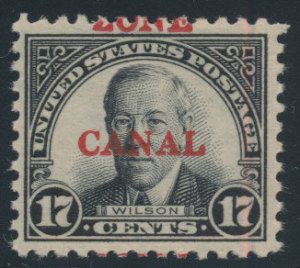Of the major world wide powers in the philately era (that is since 1840) the least imperialistic has been the United States. Great Britain and France had between them hundreds of imperial philatelic entities. German was a big player and even Italy, which had more of an appetite for conquest than the digestion, had fifty or more imperial philatelic areas for which she issued stamps. Partly because our own internal markets were so large, partly because of immigration, partly because of endless land to be developed and maybe a bit because of our democratic aspirations, America was a far smaller player in the Imperial game than our European competitors. This changed a bit in the late Nineteenth Century when the Spanish American war gave America three colonies – the Philippines, Cuba and Puerto Rico. These colonies were largely not-for- profit imperial ventures. Two other colonies were more commercial and trade driven-the Canal Zone and the Danish West Indies. A canal through the Isthmus of Panama linking the Atlantic and Pacific oceans and cutting thousands of miles off the sea routes between North and South America had been a dream since the early days of the conquistadors. In the late nineteenth century work on a canal began in earnest and after thousands of deaths, largely from Yellow Fever, the United States got into the game. The Canal Zone was a strip of land leased from Columbia and Panama over which the United States had jurisdiction and it was here that the canal was built. For about fifty years the United States issued stamps for the Americans who worked and occupied the Canal Zone. There are many varieties and these stamps are among the most minutely specialized in all of philately. We are selling a wonderful specialized collection of these stamps in our next Public Auction which will posted this weekend.



